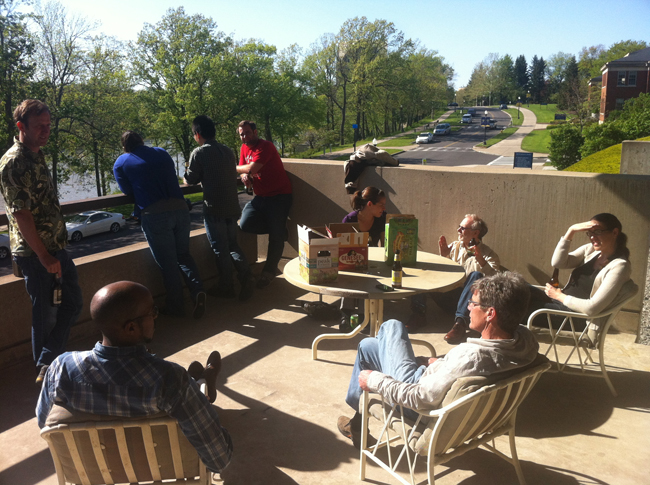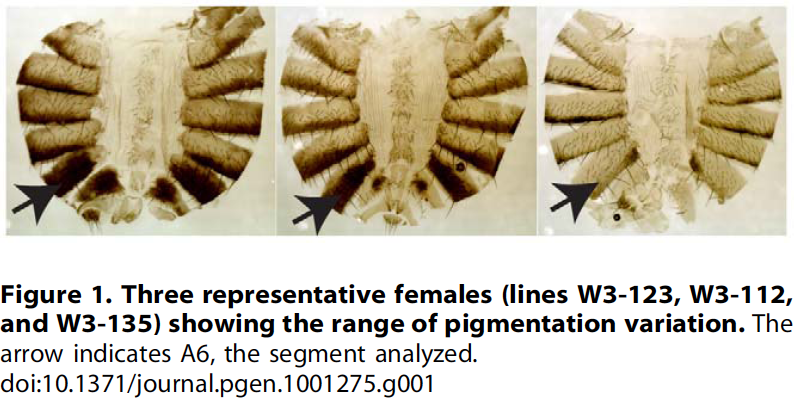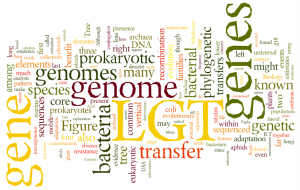 Before beginning our discussion of speciation, we must first address some fundamental questions about species and speciation, including: Are they species real? What are species? and How do we diagnose and delimit species? We’re going to largely skirt the first of these questions by accepting the notion that species are real, at least in the sense that they correspond with actual discontinuities in nature rather than being entirely subjective constructs of our human minds.
Before beginning our discussion of speciation, we must first address some fundamental questions about species and speciation, including: Are they species real? What are species? and How do we diagnose and delimit species? We’re going to largely skirt the first of these questions by accepting the notion that species are real, at least in the sense that they correspond with actual discontinuities in nature rather than being entirely subjective constructs of our human minds.
Our discussion of how to define and delimit species begins with a classic paper by the German-born ornithologist Ernst Mayr. No biologist has had a stronger impact on modern views of species than Mayr; indeed, the biological species concept (BSC) that continues to dominate our thinking about species and speciation is often traced back to Mayr’s 1942 classic Animal Species and Evolution. Like most good ideas in science, however, the BSC did not appear from whole cloth in a single contribution. Instead, Mayr’s formulation of the BSC was inspired by earlier views expressed by Dobzhansky, Wright, Rensch, Remane, and others. Our first reading this week is a Mayr paper that preceded Animal Species and Evolution in which Mayr outlines the foundations for his own nascent perspective on species and speciation (Mayr 1940). In his paper in The American Naturalist on “Speciation Phenomena in Birds” Mayr sought to formulate a new definition for species that avoided perceived conceptual and practical shortcomings of the definitions offered by his predecessors. He was particularly interested in formulated a concept that was both evolutionarily meaningful and could be applied in nature to groups such as birds. Although this paper does not use the term “biological species concept,” it establishes the core features of the modern BSC. It is also clear that Mayr, even in contributions that are now more than 70 years old, had a fairly nuanced view of the major challenges that would face the BSC in the years to follow.
Botanists have always been among the strongest critics of the BSC, often arguing that this concept simply does not apply in groups such as plants where hybridization between phenotypically distinct forms and asexual reproduction are common phenomena. Our second two readings involve an exchange between Mayr and a critic over application of the BSC to plants. In his 1992 report in The American Journal of Botany, Mayr directly addresses critics of the BSC by arguing that the vast majority of plant species in a regional fauna can be diagnosed as biological species. In addition to addressing a range of conceptual critiques of the biological species concept, Mayr applies the BSC to a well-studied plant community in Concord Massachusetts. Although Mayr identifies a number of instances where species delimitation via the BSC is challenged by, for example, apomixis, hybridization, or cryptic morphological differentiation, he ultimately concludes that the vast majority of the species in this flora conform with the expectations of “good species” under the BSC.
In a response to Mayr’s paper Whittemore (1993) argues that Mayr’s approach is flawed, perhaps most importantly because the criteria that Mayr uses to diagnose and delimit species are not necessarily directly tied to Mayr’s conceptual view of what species actually are. In other words, Whittemore argues that Mayr is not actually delimiting species using the same criteria that he uses to define what species are. Whittemore is a botanist whose own work has focused specifically on a plant genus (Quercus) whose frequent hybridization has proven particularly problematic for taxonomists (Burger 1975, Whittemore and Schaal 1991). Although Whittemore does not offer an explicit or easily characterized alternative to Mayr’s approach, he makes it clear in several places that one of his main concerns stems from the possibility that the integrity of species may be maintained in nature in spite of fairly extensive hybridization and introgression (e.g., p. 579, 581 in Whittemore 1993), and ultimately argues that species may be “maintained by factors other than total reproductive isolation.”
This exchange between Mayr and Whittemore occurred at a time when the formulation of competing species concepts was somewhat of a cottage industry, culminating in a number of lengthy articles and book length volumes that catalogued and debated dozens of alternative species concepts (Mayden 1997, Wheeler and Meier 2000). What seems to have been lost in this polarizing debate was the fact that most biologists broadly agreed about the expected properties of species, and differed primarily in how they went about diagnosing them. Although he was certainly not the first to recognize this problem, Kevin De Queiroz, a herpetologist at the Smithsonian, has provided the most influential solution to this problem. In a series of papers dating back to the late 1990s, de Queiroz outlines his General Lineage Concept of species, and suggests that “[a]ll modern species definitions either explicitly or implicitly equate species with segments of population level evolutionary lineages.” Under the GLC, most of the previously proposed species concepts are recognized as non-mutually exclusive criteria that one might use to delimit population level evolutionary lineages. Although often overlooked by workers interested primarily in laboratory model organisms, the GLC has been highly influential among practicing systematists and taxonomists. Our final reading is one of de Queiroz’s earliest papers on the GLC and comes from the Endless Forms: Species and Speciation volume edited by Howard and Berlocher (Note: the PDF for this reading is relatively low quality, but should be readable as long as you don’t zoom in too much).
With debate about species concepts (at least temporarily) on the back-burner, systematists have developed a diverse range of new tools for delimitation of species in nature and are broadly applying these methods to a range of taxa (reviewed in Sites and Marshal 2003, 2004).
More details on readings are below the fold. Continue reading






